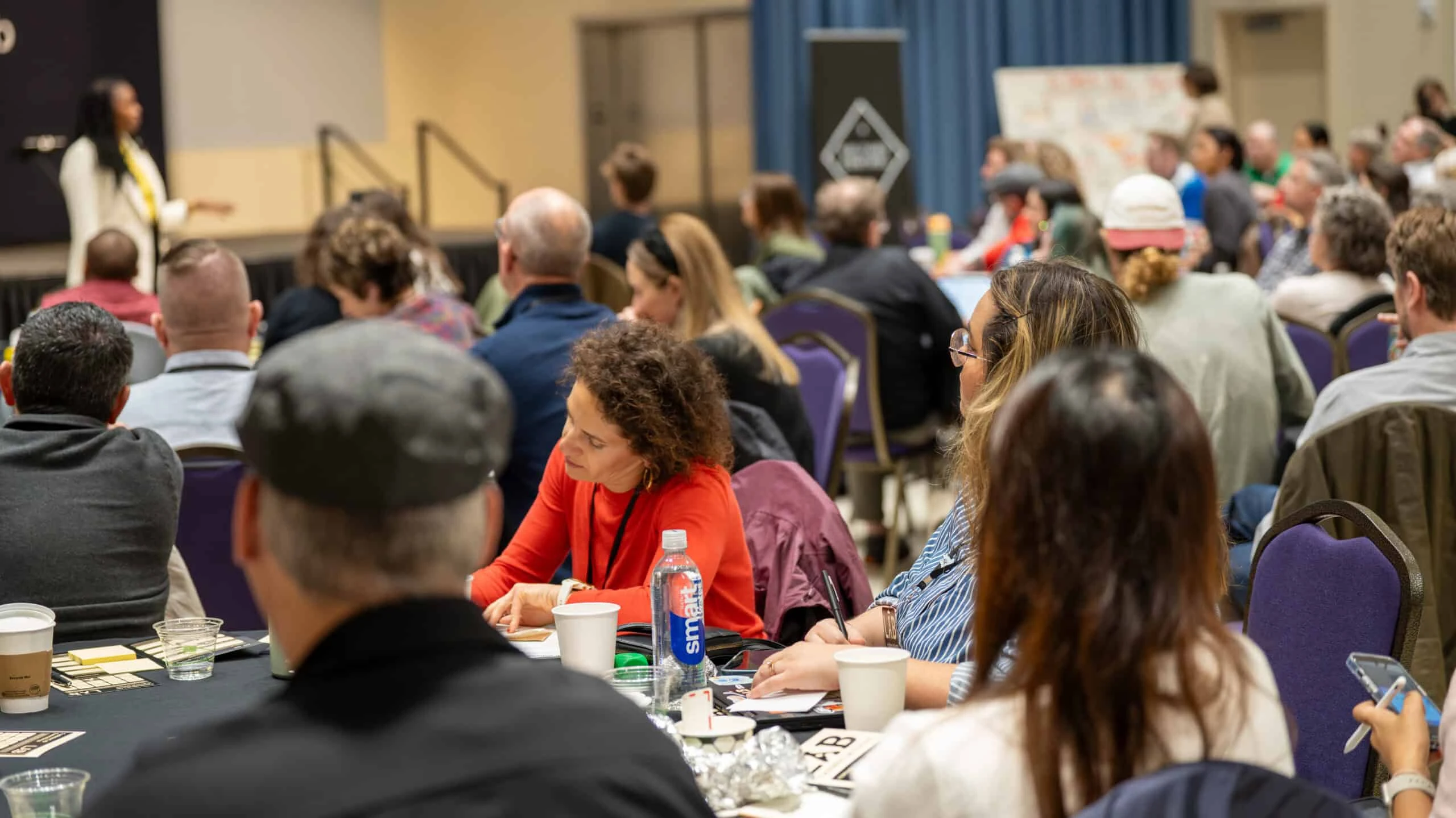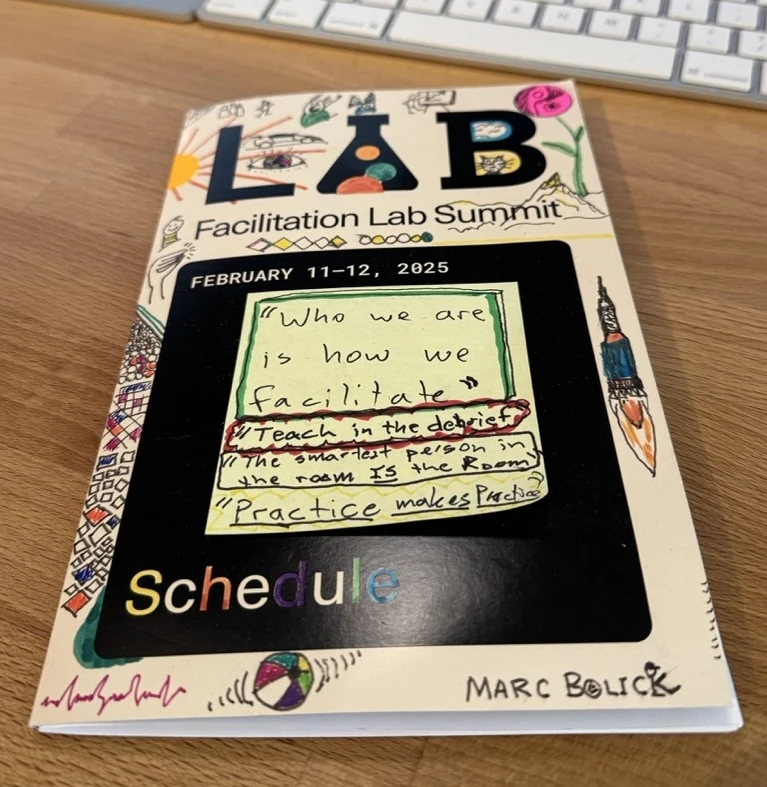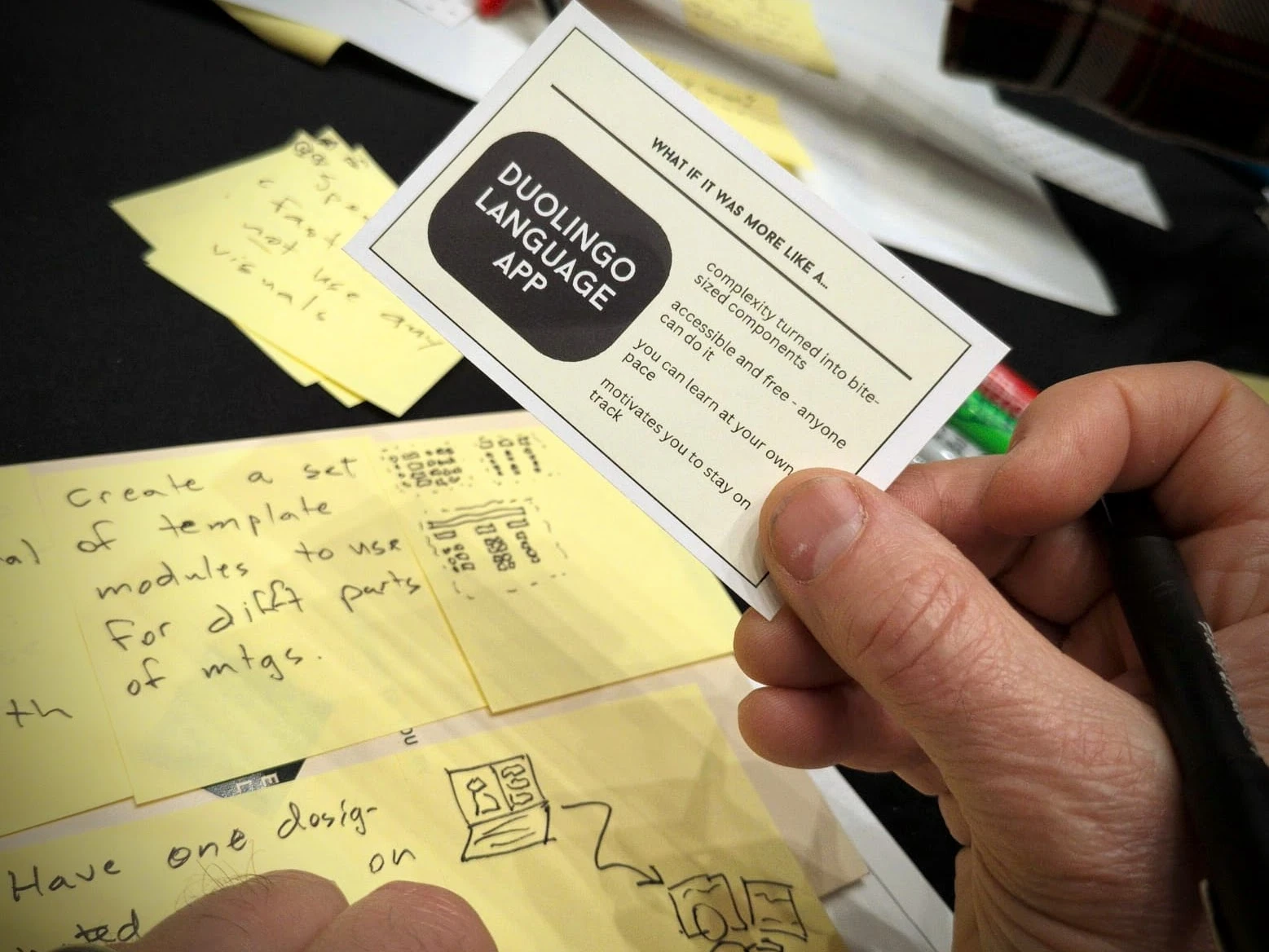Written by Tes Cohen and Marc Bolick
In February 2025, we had the privilege of attending the Facilitation Lab Summit in Austin, Texas, put on by our friends at Voltage Control. This gathering of facilitation professionals provided a rich environment for learning, connection, and growth. As practitioners deeply committed to human-centered approaches, we're excited to share our key takeaways and reflections.
What is the Facilitation Lab Summit Anyway?
The Facilitation Lab Summit is an event designed specifically for facilitators. It is an experiential, two-day event where practitioners gather to learn from experts and other practitioners in the field of facilitation, design, innovation, consulting, coaching...professionals who guide other people and groups to achieve goals.
The Summit is put on annually by Voltage Control. This is where we (Tes and Marc) met, during one of the many activities that happened throughout the two days. We had a delightful conversation and agreed to stay in touch. Now, here we are sharing our reflections on what we learned.
What Made This Summit Unique
Tes
ZERO Panels or Speakers
I was blown away that there was not a single panel or speaker at the summit. Every session was a workshop where we as participants had the chance to directly engage with the content. There were sticky notes aplenty. We even acted out scenarios on stage. There was laughter. There were tears. It was powerful!
It's not every day that there's a conference being run by a company that trains facilitators, that's designed FOR facilitators to build their toolbox of facilitation skills. That's pretty meta. And it's a tough (albeit in a kind-hearted, supportive way) crowd. Voltage Control did a terrific job developing engaging content.

The Summit underway (photo credit: Voltage Control)
Marc
Focused on the Facilitator as Learner
This Summit was all about learning as a facilitator, which made my investment of time more meaningful. Each presenter brought a different angle on the practice, from design thinking to change management to non-verbal communications and much more. The team at Voltage Control carefully guided the presenters to make their sessions interactive, so we could learn by doing.
The content and presenters were diverse, representing a variety of industries, company sizes, and facilitation focus areas. Overall, this was a gathering of a community that was there to connect and learn. The presenters did an excellent job of facilitating collaboration and reflection to help us all remember that we are never finished growing, and we are better together than alone.
There was laughter. There were tears. It was powerful!
Content Highlights
Tes
The Power of "The Twist" as a Surprise and Delight Moment
In JJ Roger's session about "Radical Acts of Delight," I found delight in his concept of the “twist” — something unexpected that changes the flow — as a surprise and delight mechanism. When you introduce a twist, it disrupts conventional thought patterns and leads to more innovative thinking. Of all the workshops, I left JJ's most excited to implement something new — a twist — in an upcoming gathering I design and facilitate.
Incorporating Celebration into Habit Creation
Reading Atomic Habits several years back set me on a path to leveraging habit-stacking more often. When I saw that there was going to be a session focused on habits, I was of two minds: 1) I could use a habit refresher, and 2) Am I really going to learn anything new?
Turns out I was wrong on the second point. Dom Michaelec taught us to make habits "crispy" (i.e., something you can imagine someone doing on screen). His tiny habits recipe culminates with a celebration. While I knew about habit stacking, I never heard of ending with a celebration. It is deceptively simple—reinforce the habit with a treat.
Suggestions for Next Summit
Tes
More Intentional Groupings
As an experience designer, I aim to infuse intentionality into every aspect of a gathering. Future summits could leverage intentional groupings throughout the day, encouraging attendees to mix up their seating and meet different people. This could lead to shared learnings and potentially post-summit collaboration opportunities.
End-of-Summit Synthesis
While the summit was full of actionable takeaways, there could have been more focus on providing space for attendees to synthesize learnings and create an action plan to bring back to their organizations. During the pre-summit salon (a special event for Voltage Control alumni), we identified actions we wanted to take in the next 2 days, 2 weeks, and 2 months based on the day's learnings. Doing something similar would have been a terrific way to close the larger summit experience.
Marc
Facilitating Better Networking and Collaboration
I agree with Tes' suggestion of more intentional grouping. Part of why I attend any event is to build new relationships, and often we need a nudge to move out of "nests" we establish when we walk into a space.
The other suggestion I have is to make it easier for table teams to do their collaborative work. On several occasions, speakers asked us to collaborate at our tables, sometimes with templates or flip chart paper. While it worked out okay, there was some friction that could be eliminated by providing either wall space or a flip chart easel, or even something as simple as a prompt from the presenter to clear off your table before getting to work.
often we need a nudge to move out of "nests" we establish when we walk into a space.
Our Key Takeaways
Tes
The Power of Creating Containers for Wisdom
The most impactful experience of the summit for me happened at the pre-summit alumni salon during a liberating structures activity called troika consulting. In groups of three, each person brought a challenge to the table while the others asked clarifying questions and generated ideas and coaching advice. I felt unbelievably seen, heard, and cared for during those 15 minutes.
My biggest takeaway: The role of facilitator is all about bringing out the wisdom that's already in the room. Often, it's simply about creating a container for participants to do exactly that amongst themselves.
Final Thoughts
The Facilitation Lab Summit reinforced our belief that facilitation sits at the intersection of art and science. It requires technical skill and deep human understanding—a combination that aligns perfectly with our respective approaches to facilitation and experience design at reshift and Gather Better.
As we continue to apply these insights in our work, we're grateful for the opportunity to be part of a vibrant community of practitioners committed to helping groups achieve meaningful outcomes through thoughtful, human-centered facilitation. If this kind of gathering sounds like it might be good for you, check out next year's Facilitation Lab Summit 2026. Hope to see you there!
Have you attended any facilitation-focused events recently? We'd love to hear your experience and insights. Drop us a line at info@reshift.us or tes@gatherbetter.co.
Co-athor Tes Cohen is the founder of Gather Better, specializing in designing and facilitating transformative workplace gatherings.
Co-author Marc Bolick is founder and managing partner of reshift, an innovation support partner for leaders and teams seeking Big Change. He draws on decades of experience in product and service innovation to facilitate collaborative problem solving and drive impact for the most complex challenges organizations face.



